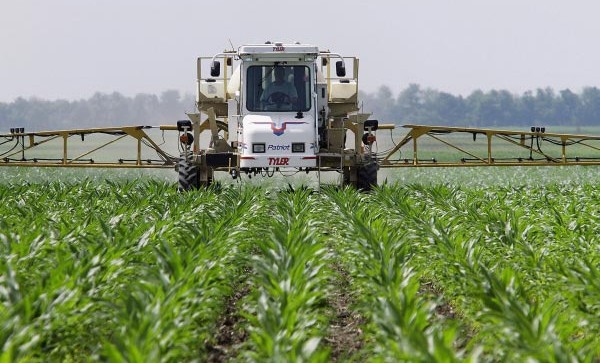Ignoring the legal requirement to examine threats to endangered species, the U.S. Environmental Protection Agency approved Wednesday the use of the dangerously toxic herbicide dicamba on crops genetically modified to tolerate the chemical.

Dicamba has been around for decades, but this new EPA decision allows the herbicide to be sprayed directly on genetically modified (GM) cotton and soybeans — opening the door for dicamba use to jump from less than 1 million pounds to more than 25 million annually on these two crops.
The scandalous decision comes on the heels of the agency’s recent decision to expand approval for a new pesticide called Enlist Duo, made for use on GM corn, cotton and soybeans.
“Once again the EPA is allowing for staggering increases in pesticide use that will undoubtedly harm our nation’s most imperiled plants and animals,” said Nathan Donley, a scientist with the Center for Biological Diversity. “Iconic species like endangered whooping cranes are known to visit soybean fields, and now they’d be exposed to this toxic herbicide at levels they’ve never seen before.”
In recent months dicamba has made headlines because its illegal use has caused extensive damage to crops in the Midwest due to spray drift. Although the approved dicamba has been formulated to reduce spray drift, the massive projection in increased use will be an ongoing cause for concern to the farming community.
The EPA’s analysis also indicated that some threatened and endangered species — including birds and mammals — may be harmed by the massive increase in herbicide use. The agency has not yet complied with its obligation to consider impacts to these species under the Endangered Species Act.
Monsanto’s own conservative estimates predict that dicamba use on soybeans would go from 233,000 pounds per year to 20.5 million pounds per year, and dicamba use on cotton could go from 364,000 pounds per year to 5.2 million pounds per year. Today’s approval covers 34 states.
This next generation of crops has been genetically engineered to resist dicamba because the use of crops genetically engineered to resist glyphosate has resulted in the development of glyphosate tolerant superweeds, which now infest nearly 100 million acres of farmland in the United States.
“We can’t spray our way out of this problem. We need to get off the pesticide treadmill,” said Donley. “Pesticide resistant superweeds are a serious threat to our farmers, and piling on more pesticides will just result in superweeds resistant to more pesticides. We can’t fight evolution — it’s a losing strategy.”



















Thank you for writing this informative story. I as a consumer want to know all about GMOs.